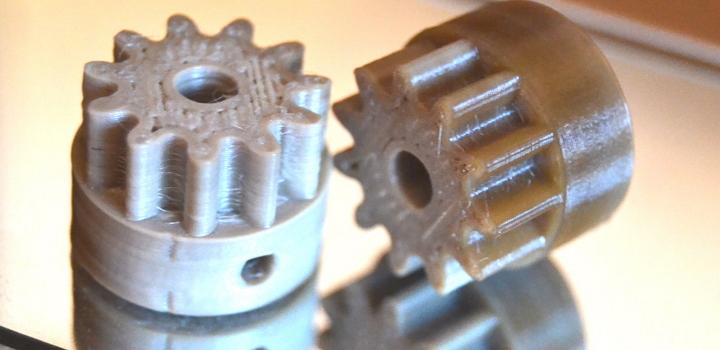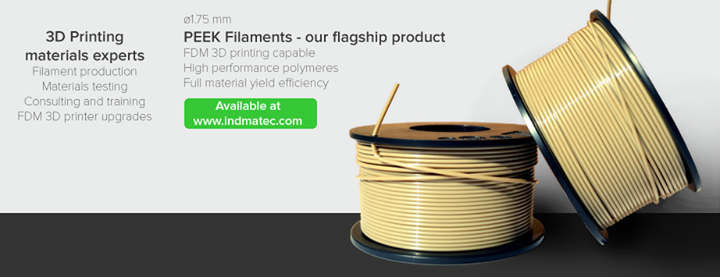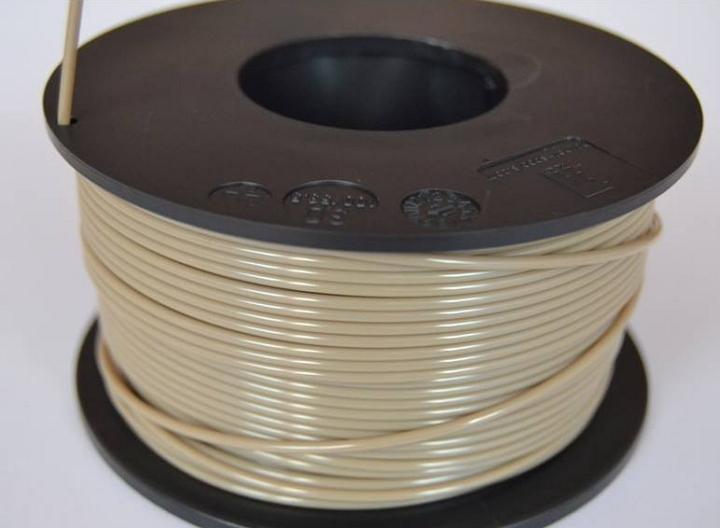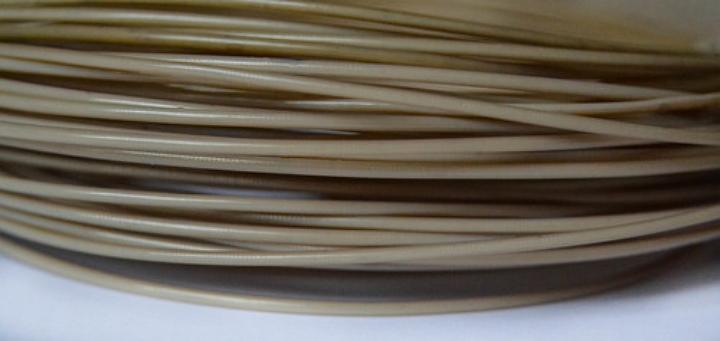 Polyether Ether Ketone (PEEK) is a high-performance, colorless polymer thermoplastic semi-crystalline, resistant to many chemicals and featuring excellent mechanical properties. PEEK is used in medical implants, aerospace, and motorsports applications.
Polyether Ether Ketone (PEEK) is a high-performance, colorless polymer thermoplastic semi-crystalline, resistant to many chemicals and featuring excellent mechanical properties. PEEK is used in medical implants, aerospace, and motorsports applications.
But until recently, PEEK has only been used in 3D printing via Selective Laser Sintering (SLS) processes as it melts at a very high temperature, around 662º F.
In the SLS process, a layer of PEEK powder is deposited onto a print bed and then a laser is used to fuse the powder into the layers of a desired object. A fresh layer of powder is deposited and fused, and the un-sintered powder surrounding the object can be used as support material.
Now INDMATEC GmbH, developers of innovative materials for FDM 3D printing in industrial production, say they’ve found a way to create a PEEK filament for use in FDM applications. The firm, based in Karlsruhe, Germany, says they’ve extruded raw PEEK into quality filament form which can be 3D printed using FDM technology.
The team at INDMATEC, CEO Tony Tran-Mai, CTO Professor Brando Okolo of the German University in Cairo and Lars Pfotzer, a Robotics Automation and FDM 3D printing expert, formed their company in September 2013. Tran-Mai and Brando met after they served as speakers on a research project in 3D printing, and Pfotzer came on board shortly thereafter.
Until now it was the high melting point of performance polymeric materials, especially thermoplastics like PEEK, which was problematic. In the case of materials like PEEK, PTFE and PPSU, the necessary melting temperature meant that they can’t be used for fabrication of parts using FDM 3D printers. But now INDMATEC says the introduction of an all metal hot-end extruder capable of attaining temperatures up to 400 degrees centigrade made their filament workable.
PEEK material is tough, strong, and rigid and has superior “creep” resistance. With its strong resistance to hydrolysis, PEEK can withstand boiling water and superheated steam used with autoclave and sterilization equipment at temperatures higher than 482° F. PEEK has a density that is at least 5 time less than most technical metals, but it’s capable of withstanding mechanical loads necessary in most engineering operations while also being approved by the FDA for food contact applications.
It can also be used in medical implant applications for orthopedics as support structures in bone fracture, cages and rods for spinal implant, and it has uses in dental prosthetics like crowns and bridges as well.
While INDMATEC says PEEK is expensive in comparison to aluminum and other technical polymers, its economic benefit as an engineering material outweighs the price considerations. A 200 gram spool of the 1.75 mm filament retails for slightly over $150, but the company warns that it can’t be processed by just any FDM 3D printer. INDMATEC says they’ll offer assistance in the handling and printing of the filament via an existing FDM 3D printer, and that they can provide advice on converting most printers to work with this new filament.
Can you imagine uses for this breakthrough, engineering-grade PEEK 3D printing filament? Let us know in the Breakthrough PEEK FDM 3D Printing Filament forum thread on 3DPB.com.
Subscribe to Our Email Newsletter
Stay up-to-date on all the latest news from the 3D printing industry and receive information and offers from third party vendors.
You May Also Like
Precision at the Microscale: UK Researchers Advance Medical Devices with BMF’s 3D Printing Tech
University of Nottingham researchers are using Boston Micro Fabrication‘s (BMF) 3D printing technology to develop medical devices that improve compatibility with human tissue. Funded by a UK grant, this project...
3D Printing Webinar and Event Roundup: April 21, 2024
It’s another busy week of webinars and events, starting with Hannover Messe in Germany and continuing with Metalcasting Congress, Chinaplas, TechBlick’s Innovation Festival, and more. Stratasys continues its advanced training...
3D Printing Webinar and Event Roundup: March 17, 2024
It’s another busy week of webinars and events, including SALMED 2024 and AM Forum in Berlin. Stratasys continues its in-person training and is offering two webinars, ASTM is holding a...
3D Printed Micro Antenna is 15% Smaller and 6X Lighter
Horizon Microtechnologies has achieved success in creating a high-frequency D-Band horn antenna through micro 3D printing. However, this achievement did not rely solely on 3D printing; it involved a combination...


































